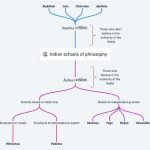Yoga and Mindfulness: Unveiling Their Philosophical Duo for Holistic Wellbeing
Introduction
In recent years, yoga and mindfulness have gained tremendous popularity, not just as wellness practices but as profound philosophical traditions. While often discussed separately, their intertwined history and shared objectives suggest a deep connection that enhances both mental and physical well-being. This article explores the complementary nature of yoga and mindfulness, delving into their philosophical roots, historical evolution, current applications, and potential future impact.
Key Concepts
At the core of yoga and mindfulness is the pursuit of self-awareness and inner peace. However, the philosophical underpinnings of these practices differ in key ways.
- Yoga: Originating from ancient India, yoga is a discipline that combines physical postures (asanas), breath control (pranayama), and meditation (dhyana) to foster spiritual and mental balance. The philosophical foundation of yoga can be traced back to Patanjali’s Yoga Sutras, which outline the eight limbs of yoga as a path to enlightenment.
- Mindfulness: Rooted in Buddhist traditions, mindfulness emphasizes present-moment awareness and non-judgmental acceptance of thoughts, emotions, and sensations. Its philosophical grounding comes from Buddhist teachings on the nature of suffering, impermanence, and self-awareness.
Although they have distinct origins, yoga and mindfulness share a commitment to self-exploration, offering tools to quiet the mind and cultivate a deeper sense of presence.
Historical Context
The historical journey of yoga and mindfulness is essential to understanding their shared evolution.
- Yoga’s Origins: Dating back over 5,000 years, yoga originated in the Indus Valley Civilization and was later codified in texts such as the Upanishads and the Bhagavad Gita. Yoga’s evolution continued with the development of Hatha yoga, which focused more on physical postures.
- Mindfulness in Buddhism: Mindfulness emerged from the teachings of Siddhartha Gautama, the Buddha, around the 5th century BCE. It forms one of the eight components of the Noble Eightfold Path, central to achieving nirvana in Buddhism.
By the 20th century, yoga and mindfulness began gaining traction in Western culture. Influential figures like Swami Vivekananda introduced yoga to the West, while mindfulness became popularized through the work of Jon Kabat-Zinn and the development of Mindfulness-Based Stress Reduction (MBSR) programs.
Current State Analysis
Today, yoga and mindfulness are widely practiced around the globe, often adapted for different cultural contexts. Their popularity in modern wellness culture highlights several key trends:
- Yoga’s Focus on Physical Fitness: In the West, yoga is often seen as a physical practice emphasizing flexibility and strength. However, this trend risks overshadowing its spiritual and mental health benefits.
- Mindfulness in Clinical Settings: Mindfulness has found a firm footing in psychology, particularly in treating anxiety, depression, and stress. Programs like MBSR have become mainstream tools for mental health care.
While both practices have evolved to meet contemporary needs, their philosophical roots remain essential to unlocking their full potential.
Practical Applications
Yoga and mindfulness offer practical tools for coping with stress, improving concentration, and enhancing well-being. Here’s how they are applied in daily life:
- Yoga Practices: A typical yoga session incorporates asanas, pranayama, and meditation. Regular practice improves physical fitness, reduces stress, and promotes mental clarity.
- Mindfulness Techniques: Mindfulness encourages staying present in the moment, whether through meditation, mindful eating, or walking. This practice helps individuals manage their emotions and reduce the impact of stressors.
Case Studies
Examining real-world examples demonstrates the transformative potential of yoga and mindfulness.
| Case Study | Outcome |
|---|---|
| Corporate Mindfulness Programs | Companies like Google and Intel have implemented mindfulness programs to reduce employee burnout and enhance productivity. Research shows participants report lower stress levels and improved emotional regulation. |
| Yoga in Schools | Many schools now offer yoga classes to help students manage anxiety and improve focus. Studies have shown improvements in students’ academic performance and emotional well-being. |
Stakeholder Analysis
Understanding the various stakeholders is critical in ensuring yoga and mindfulness are applied effectively and inclusively.
- Practitioners: Individuals practicing yoga or mindfulness for personal development. Their needs include accessible instruction and environments that foster growth.
- Healthcare Professionals: Psychologists and medical practitioners use mindfulness as a therapeutic tool for treating mental health disorders.
- Businesses: Corporations are increasingly incorporating mindfulness programs to enhance employee well-being and productivity.
Implementation Guidelines
To integrate yoga and mindfulness effectively into various settings, it’s essential to follow specific guidelines:
- Accessibility: Programs must be adapted to suit different populations, including those with physical limitations or mental health issues.
- Education: Practitioners should be trained in the philosophical foundations of both practices to ensure a comprehensive understanding beyond just physical or surface-level benefits.
- Customization: Tailoring programs to individual needs will maximize their impact, whether in schools, workplaces, or healthcare settings.
Ethical Considerations
The rise of yoga and mindfulness in Western culture raises several ethical concerns:
- Commercialization: Yoga, in particular, has become a multi-billion-dollar industry. Critics argue that this commodification dilutes the practice’s spiritual significance.
- Cultural Appropriation: There is ongoing debate around the appropriation of Eastern practices like yoga and mindfulness in the West without proper acknowledgment of their cultural origins.
Addressing these concerns requires a mindful approach to respecting the historical and philosophical roots of these practices.
Limitations and Future Research
While yoga and mindfulness have demonstrated significant benefits, there are several limitations and areas for future research:
- Limited Long-Term Studies: Although short-term benefits are well-documented, more longitudinal research is needed to understand the long-term impacts of both practices on physical and mental health.
- Personalization of Practices: Future research should explore how to tailor these practices to suit individual differences more effectively, including age, mental health status, and physical ability.
Expert Commentary
Experts agree that yoga and mindfulness are powerful tools for holistic well-being, but their full potential is only unlocked when their philosophical and historical significance is fully understood. The integration of mindfulness and yoga, as both complementary and unique disciplines, fosters not just physical fitness but a deeper connection to the self and the world. Looking forward, the future lies in expanding access to these practices, ensuring that they remain grounded in their philosophical roots, while continuing to evolve to meet modern needs.








